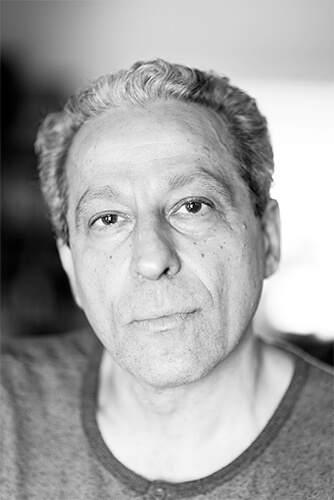Ed Kashi is a photojournalist, filmmaker and educator dedicated to documenting the social and political issues that define our times. A sensitive eye and an intimate relationship to his subjects are signatures of his work. As a member of the prestigious photo agency VII, Kashi has been recognized for his complex imagery and its compelling rendering of the human condition.
“I take on issues that stir my passions about the state of humanity and our world, and I deeply believe in the power of still images to change people’s minds. I’m driven by this fact; that the work of photojournalists and documentary photographers can have a positive impact on the world. The access people give to their lives is precious as well as imperative for this important work to get done. Their openness brings with it a tremendous sense of responsibility to tell the truth but to also honor their stories.”
Kashi’s images have been published and exhibited worldwide. Another of Kashi’s innovative approaches to photography and filmmaking produced the
Iraqi Kurdistan Flipbook with MediaStorm, which premiered on MSNBC.com in December 2006. Using stills in a moving image format, this creative and thought-provoking form of visual storytelling has been shown in many film festivals and as part of a series of exhibitions on the Iraq War at the
George Eastman House. Also, an eight-year personal project completed in 2003,
Aging in America: The Years Ahead, created a traveling exhibition, an award-winning documentary film, a website and a book which was named one of the best photo books of 2003 by American Photo.
Along with numerous awards, including Second Prize Contemporary Issues Singles in the 2011
World Press Photo contest, UNICEF’s Photo of the Year 2010, a Prix Pictet 2010 Commission and honors from Pictures of the Year International, Communication Arts and American Photography, Kashi’s images have been published and exhibited worldwide, and his editorial assignments and personal projects have generated six books. In 2008,
Curse of the Black Gold: 50 Years of Oil in the Niger Delta was published, and June 2009, saw the publication of Kashi’s latest book
THREE, based on a series of triptychs culled from more than 20 years of image making.
In 2002, Kashi and his wife, writer/filmmaker
Julie Winokur, founded
Talking Eyes Media. The non-profit company has produced numerous short films and multimedia pieces that explore significant social issues. The first project resulted in a book and traveling exhibition on uninsured Americans called,
Denied: The Crisis of America’s Uninsured.
“Ed Kashi is intelligent, brave and compassionate. He always understands the nuances of his subjects. He fearlessly goes where few would venture. And he sympathetically captures the soul of each situation. Ed is one of the best of a new breed of photojournalistic artists.” --
David Griffin, Visuals Editor, The Washington Post
Ed Kashi talks about Climate Change
Abandoned Moments